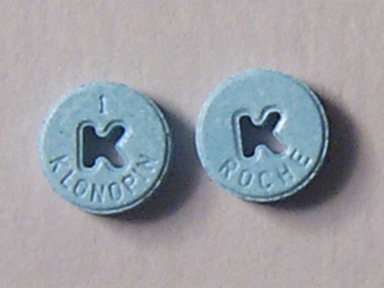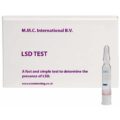A 10-panel drug test is a type of test that looks for 10 of the most common drugs that a person may be abusing. This selection usually includes five common prescription medications and five illicit street drugs. Standard 10-panel drug tests normally test a person’s urine. This is a simple approach, as these drugs leave traces in the urine when it passes out of the body.
As a study in the journal Analytical Toxicology notes, urine testing is also more likely to detect substance use than other forms of tests, such as saliva tests. There are some tests that use other substances, such as blood or hair, to test for the drugs. These may be more accurate in some cases, but the process is more complicated. Many administrators prefer to use urine tests because of the accuracy and simplicity of the process. Major applications of drug testing include detection of the presence of performance enhancing steroids in sport, employers and parole/probation officers screening for drugs prohibited.
Klonopin is a prescription medicine used to treat the symptoms of seizures and panic disorder. Klonopin may be used alone or with other medications. Klonopin belongs to a class of drugs called Antianxiety Agents, Anxiolytics, Benzodiazepines, Anticonvulsants, Benzodiazepine.
Klonopin is a potentially habit-forming benzodiazepine, with some people becoming addicted to it in as little as a few weeks. Many people have become addicted to Klonopin taking only the amount prescribed by their doctor. Klonopin blocks special receptors in the brain to reduce anxiety, stress, and difficulty relaxing. Once a person is addicted to the drug, their brain can no longer produce feelings of relaxation and calmness without it. This is why people addicted to Klonopin struggle to quit and are unable to function normally when they don’t have it.
Some signs that you may have a Klonopin addiction include:
- Persistent cravings for Klonopin
- Continued Klonopin use despite negative consequences
- Having a desire to quit but being unable to do so
- Losing interest in social or professional obligations
- Developing legal or financial issues.
Klonopin addiction starts when the user builds a tolerance to the drug, which means they need larger doses to get the same effects they once had with smaller doses. Some users then start taking more than they were prescribed, or using the drug just to get high. Singer and songwriter Stevie Nicks publicly shared her struggles with a Klonopin addiction. Because the drug was prescribed by her doctor, Nicks said she had a false sense of security about using it.
Understanding Klonopin (Clonazepam)
A long-acting benzodiazepine, Klonopin is the brand name for clonazepam. Klonopin slows down brain activity to help users feel relaxed. It was initially formulated to help people with epilepsy manage seizures. Later, the drug’s rapid and powerful calming effects were also recognized as a way to treat panic attacks. Klonopin is often prescribed to ease anxiety and withdrawal symptoms from alcohol and other addictive substances. Doctors may also prescribe Klonopin for short-term insomnia. The drug is swallowed as a blue tablet or taken as a quick-dissolve tablet placed on the tongue as often as three times a day. Slang terms for Klonopin include k-pins, tranks, downers or benzos.
Klonopin isn’t generally recommended for long-term use because of its addictive potential. The drug has a relatively long half-life, or length of time the drug is active in the body.
How Long Do Benzos Stay in the Body?
Several factors play a role in how long benzodiazepines stay in your system. They can stay in urine 3 to 6 weeks, hair up to 90 days, and blood 2-3 days. Once Klonopin’s effects wear off, addicted users start to experience symptoms of anxiety and insomnia. Many people attempting to quit Klonopin relapse when withdrawal symptoms become unbearable.
Klonopin Doesn’t Show Up On Drug Test: True or False
Klonopin will show up on a 10 panel drug test. Due to its long half-life of 20-50 hours, Klonopin stays in the body for a longer time than other drugs with relatively shorter half-lives. The half-life of a drug refers to the amount of time it takes a person’s body to eliminate half of the dose.
The following are some general timeframes for how long Klonopin will show up on different types of tests based on case studies.
It is important to note that Klonopin may not show up on common urine tests. The test may be able to show that the drug is present, but it may not be able to determine the amount.
- In one study, traces of clonazepam’s major metabolite 7-aminoclonazepam were detectable on a urine test for up to 3 weeks after a single 3mg dose, and one of the participants in the study tested positive 28 days after the last dose. However, the Mayo Clinic states that long-acting benzodiazepines such as clonazepam may be detected in the urine for up to 30 days.
- In one study, 7-aminoclonazepam was detectable in the hair of 6 out of 10 participants after they took a single 3mg dose. In 2 participants, it was detectable for 28 days. In 2 participants, it was detectable on the 21st day, and in 2 participants, it was detectable on the 28th day.
- Saliva tests have a detection window of up to 5 and 6 days following last use.
Individual factors can affect the result of a test, including:
- Age.
- Gender.
- Health.
- Weight.
- pH of urine.
- Urine concentration.
- When the last dose was taken.
- Amount taken.
- Frequency of use.
How Do You Detox From Klonopin?
Klonopin is a Schedule IV controlled substance, which means it has some potential for abuse and physical or psychological dependence. Physical dependence can develop after just 2 weeks of taking the drug daily, explains the National Alliance on Mental Illness (NAMI). It is possible to develop some amount of physiological dependence even when taking the drug exactly as directed by your doctor.
If you have been abusing Klonopin, a medical detox program can help ensure a safe withdrawal.
NAMI warns that clonazepam use should not be stopped abruptly or without talking to your doctor first. If stopped too abruptly, unpleasant side effects are likely to occur, and some can even be life-threatening. Withdrawal symptoms may not develop for more than a week, reach peak intensity during the second week, and fade during the third or fourth week. If you have been taking the medication under the care of a physician, you can work with them on a tapering schedule to gradually reduce the dose. The recommended tapering schedule is to decrease the dose by 0.125mg every 3 days until you are no longer taking the drug. However, talk to your doctor to determine the best dose for you. READ: How to Spot A Fake Klonopin Pill






